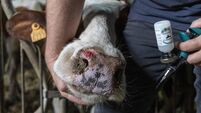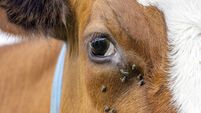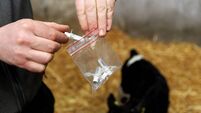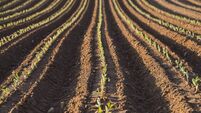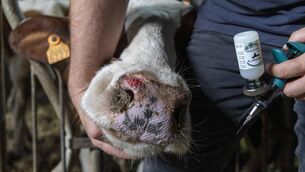The fundamentals of calf rumen development
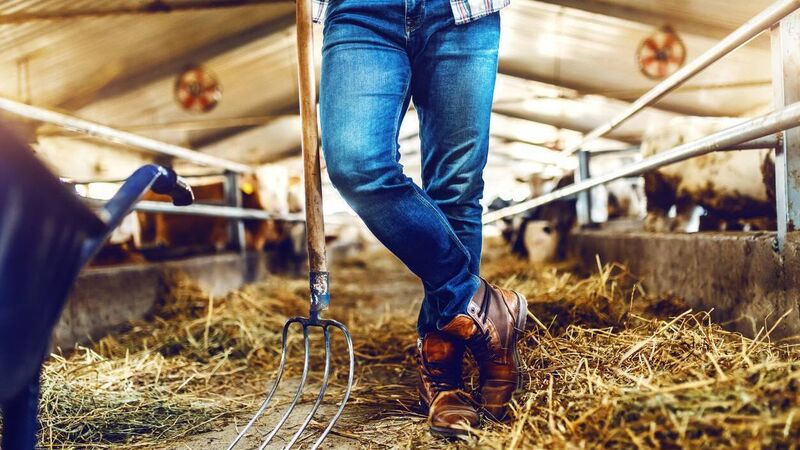
Forages such as straw or hay are a good source of fibre, which promotes growth of the rumen’s muscular layer.
Concentrates and water intake are the most important factors for a calf's rumen development, and for a smooth transition from a liquid diet to a total solid diet.
That's the advice to Tirlán dairy farmers, on the five key fundamentals of calf rumen development.
Failure to prepare the rumen can cause growth checks, or put calves at greater risk of illness because of nutritional stress.
Growth checks or illness are costly and diminish the value of what you have done with that calf up to the time of weaning.
When the calf is born, the rumen does not contain any bacteria. The bacteria that colonise the rumen come from the environment and from feeds the calf eats. As the calf begins to eat more solid feed, that feed determines the type of bacteria that dominate in the rumen.
By giving calves access to calf starter, fermentation of starch is encouraged, which lowers rumen pH, and encourages bacteria growth, and production of butyrate.
Regardless of when the process starts, it takes two to three weeks for the bacterial population to grow to a number that can efficiently digest concentrates.
Bacteria in the rumen need water, to ferment dry feed. Without adequate amounts of water, bacteria will not grow, which hinders ruminal development.
Calves should be provided water at birth, not only when calf starter is being offered.
Water does not cause the oesophageal groove to close, so any water consumed will enter the rumen, unlike milk and milk replacers which bypass the rumen and enter the abomasum.
Offering free choice, fresh, clean water will promote starter intake and can increase average daily gain.
At birth, the rumen has no absorptive ability. The bacteria that digest starch produce butyrate and propionate. Bacteria that digest fibre produce mostly acetate.
Cells in the rumen wall use butyrate for energy and growth. So, encouraging calf starter intake stimulates the growth of rumen papillae (finger-like projections) and capillary development. The growth of papillae increases the surface area of the rumen that is available for absorbing the nutrients being produced.
Rumen pressure, contractions, and regurgitation (cud chewing) are measurements of ruminal outflow activity. This activity is very slow at first, but should increase proportionally with dry feed intake.
Forages such as straw or hay are a good source of fibre, which promotes growth of the rumen’s muscular layer, and helps maintain the health of the rumen lining. The muscular movement also helps mix the contents within the rumen, for greater digestion.
Additionally, chewing the cud encourages production of saliva, which helps buffer the rumen, reducing the risk of acidosis. As well as a calf starter, good-quality straw or hay should be offered as early as day three on a "little and often" basis, to ensure freshness, and to encourage intake.
Place feed racks and buckets at a suitable height for calves to reach, and to reduce the possibility of soiling. If stimulated early on, a calf’s rumen can start to function from as early as five days of age. Most calves are actively ruminating by four weeks old.
Provide fresh calf starter daily, as early as three days old (just a handful) to encourage solid feed intake, and increase it according to consumption. The calf starter should be changed daily, keeping it fresh, to encourage consumption. Concentrate should be increased gradually, with calves consuming at least 1 kg to 1.5 kg of concentrate daily, by weaning.
All good starters require sufficient nutritional content. However, without good palatability (high quality ingredients, free from dust), the nutritional content will not be utilised. Palatability is generally highest with textured feed, followed by pellets, as a young calf will eat a coarse ration more readily than pellets.
A coarse ration encourages more chewing and saliva secretion. The coarseness also benefits growth of the muscle layers in the rumen wall.

